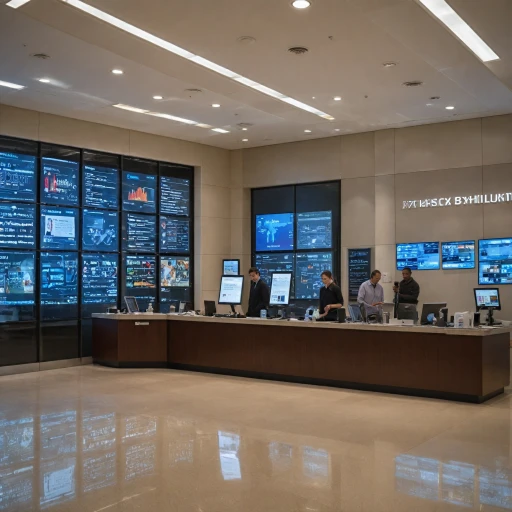Understanding the Importance of Customer Experience
The Heartbeat of Business: Why Customer Experience Matters
In the fast-paced business environment, customer experience is more than just a buzzword. It's the lifeline that keeps your company thriving. When customers feel valued and understood, they stick around, and that loyalty translates into long-term success. But what makes customer experience so vital for C-suite leaders?
Think about the last time you had an exceptional experience as a customer. Maybe it was a restaurant where the staff remembered your name or a tech support call that solved your problem in minutes. Those moments create lasting impressions. They make you want to return, and even better, tell others about it. For businesses, this translates into increased revenue and a stronger brand reputation.
Customer Experience: A Game-Changer in Competitive Markets
In industries where products and services are similar, customer experience becomes the differentiator. It’s not just about what you sell, but how you sell it. Companies like Apple and Amazon have set the bar high by focusing intensely on customer satisfaction. They understand that a happy customer is not only a repeat customer but also a brand ambassador.
For C-suite leaders, enhancing customer experience should be a strategic priority. It involves aligning every aspect of the business—from marketing to operations—with the goal of delighting customers at every touchpoint. This approach not only drives sales but also fosters a culture of excellence within the organization.
Creating Emotional Connections
Building emotional connections with customers is key to delivering a memorable experience. It’s about understanding their needs, anticipating their desires, and exceeding their expectations. This requires empathy and a genuine commitment to putting the customer first. When customers feel emotionally connected to a brand, they are more likely to forgive mistakes and remain loyal.
To learn more about how to elevate customer experience as a business leader, check out this insightful guide.
Conclusion: The Imperative of Customer Experience
In the end, customer experience is not just a department or a project. It's a mindset that should permeate every level of the organization. As a C-suite leader, your role is to champion this mindset, ensuring that every team member understands the value of putting the customer first. By doing so, you'll not only boost your company's bottom line but also create a brand that customers love and trust.
Aligning Customer Experience with Business Objectives
Connecting Customer Experience to Business Goals
Aligning customer experience with your business objectives isn't just a nice-to-have; it's the secret sauce that keeps your company moving forward. When your customer experience strategy syncs with your business goals, you're not just meeting customer needs; you're also pushing your company toward success. Imagine a retail company aiming to boost online sales. By improving the online shopping experience—faster load times, intuitive navigation, personalized recommendations—they're not only making customers happy but also driving sales, which is a win-win.Bridging the Gap Between Strategy and Execution
It’s one thing to set business objectives, and another to ensure your customer experience initiatives are helping you hit those targets. This is where many companies stumble. The key is to have clear communication and collaboration between teams. Marketing, sales, and customer service should all be on the same page, working towards common goals.Real-World Success Stories
Take the example of a tech company that wanted to increase customer retention. They realized their support services were lacking, so they revamped their customer service approach. By providing quicker response times and more personalized support, they saw a significant uptick in customer loyalty. This not only met their retention goals but also boosted their brand reputation. For more insights on aligning customer experience with business objectives, check out this strategic imperative for C-Suite leaders.Leveraging Technology to Enhance Customer Experience
Boost Engagement with Cutting-Edge Tech
The digital age offers a treasure chest of technology that can elevate the customer journey. From AI-powered chatbots that provide instant support to augmented reality that enhances product interaction, the opportunities are vast. Businesses are tapping into AI to personalize interactions, providing tailored recommendations that feel custom-created. This isn't just about making sales, it's about creating experiences that stick. Consumers appreciate brands that understand their needs before they even have to ask. It's a smart move to employ data analytics to track customer behavior and predict trends, turning insights into action. Think data dashboards that help your team spot issues or opportunities in real-time, making a big difference to the bottom line. Then there's automation, shaving off tedious tasks and freeing up your team's time for more meaningful interactions. Imagine automated follow-ups that nurture leads or customer service solutions that resolve issues before they become complaints. All this drives efficiency and boosts customer satisfaction. Of course, cybersecurity is key. As you gather more personal data, ensure that you’re protecting it. Trust is a currency and your customers need to know their data is in safe hands. Upgrading your tech stack isn't an overnight task, but the payoff in customer loyalty and bottom-line benefits is worth the investment. Curious about the strategic horizons of work in this context? Delve further with this strategic insight to navigate what lies ahead. The tech tools at your disposal set the stage for extraordinary customer experiences, turning fleeting encounters into lasting relationships.Building a Customer-Centric Culture
Fostering a Customer-First Mindset
Creating a customer-centric culture isn't just about setting new policies; it's about changing the heart and soul of your organization. Think of it as shifting your company’s DNA to prioritize the customer in every decision and action. This requires genuine commitment from the top down, starting with you, the C-suite leaders.
Empower Your Team
Your employees are the frontline ambassadors of your brand. Empower them to make decisions that benefit the customer experience. When employees feel trusted and valued, they’re more likely to go the extra mile for customers. Consider training programs that emphasize empathy and active listening, which can significantly improve interactions with customers.
Open Communication Channels
Encourage open communication within your organization. Create platforms where employees can share customer feedback and insights without fear of repercussions. This not only boosts morale but also provides invaluable insights into customer needs and preferences.
Lead by Example
As a leader, your actions set the tone for the rest of the organization. Show your commitment to customer experience by participating in customer interactions, whether through direct engagement or by reviewing customer feedback regularly. Your involvement will inspire others to follow suit.
Celebrate Successes and Learn from Failures
Recognize and reward employees who deliver exceptional customer service. This not only motivates them but also sets a benchmark for others. On the flip side, when things don’t go as planned, use those moments as learning opportunities. Analyze what went wrong and how similar issues can be prevented in the future.
By embedding a customer-first mindset into your company culture, you're not just improving customer satisfaction—you're building a loyal customer base that can drive your business forward. Remember, a happy customer is your best advocate.
Measuring Customer Experience Success
Tracking the Pulse of Your Customers
To truly understand how your customers feel about your brand, you need to keep your finger on the pulse of their experiences. This isn't just about collecting feedback; it's about interpreting what that feedback means for your business. A variety of tools are available to help you gauge customer sentiment, from surveys and feedback forms to social media listening tools. The key is to use these tools to gather actionable insights that can drive improvements.
Setting Clear Metrics
Metrics are your best friend when it comes to measuring customer experience success. But not all metrics are created equal. You want to focus on those that align with your business goals. Net Promoter Score (NPS), Customer Satisfaction Score (CSAT), and Customer Effort Score (CES) are popular choices. These metrics can provide a snapshot of how well you're meeting customer expectations and where you need to improve.
Analyzing Data for Continuous Improvement
Data without analysis is just noise. Once you've collected your metrics, it's crucial to analyze them to identify trends and patterns. This analysis can reveal areas where you're excelling and where there's room for growth. Remember, the goal is continuous improvement. Regularly reviewing and acting on your data ensures that you're always moving in the right direction.
Engaging Your Team in the Process
Measuring customer experience isn't just a task for the data team. It requires buy-in from the entire organization. Engage your team by sharing insights and encouraging them to contribute ideas for enhancing the customer experience. When everyone is on the same page, it's easier to implement changes that make a real difference.
Real-Life Success Stories
Consider the story of a retail company that revamped its customer service strategy by focusing on NPS. By actively seeking customer feedback and making targeted improvements, they saw a 20% increase in customer retention over a year. This success was driven by a clear understanding of what their customers valued and a commitment to delivering on those expectations.
For more insights on creating a customer-centric approach, check out this customer-centric approach guide.














